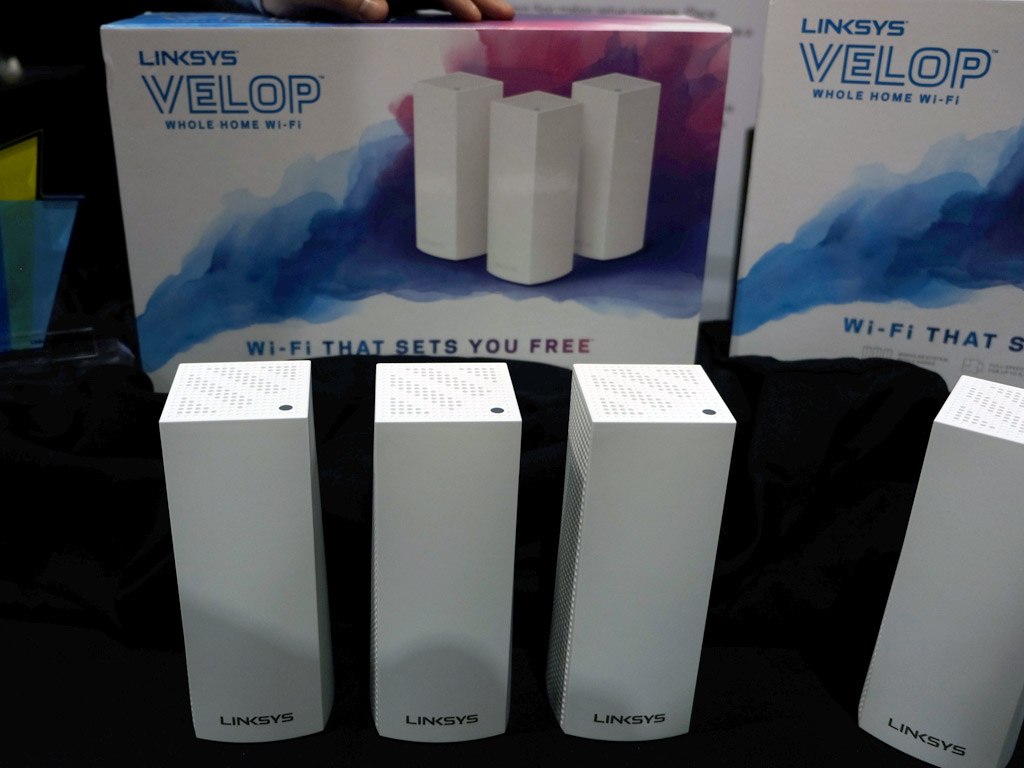Linksys has entered the burgeoning networking sub-category of mesh Wi-Fi with the Velop, a router that will come as a single unit, or in a pack of two or three to cover your home with a solid connection.
While Wi-Fi is objectively great in most cases, especially when compared to how it was even eight years ago, range is still the biggest issue. The 5GHz band is best for faster throughput necessary to stream and download at faster speeds, except its range isn’t as wide as the older, and more widely used, 2.4GHz band.
 What mesh Wi-Fi does is a little different from extenders or powerline adapters in that there is no “handoff” from the router to another device to expand the network. In the case of the Velop system, each unit uses proprietary technology to link together. The unit connected to the modem, which brings in the Internet connection from your provider, communicates with the other units that are called “nodes.”
What mesh Wi-Fi does is a little different from extenders or powerline adapters in that there is no “handoff” from the router to another device to expand the network. In the case of the Velop system, each unit uses proprietary technology to link together. The unit connected to the modem, which brings in the Internet connection from your provider, communicates with the other units that are called “nodes.”
Linksys calls this “Whole Home Wi-Fi” for the obvious connotation. The gist is that the signal you receive next to the unit at the source where the modem is doesn’t degrade wherever the nodes are located, thereby ensuring that the connection is at its fullest throughout. This is different from how Wi-Fi extenders work, where the signal is boosted but isn’t actually part of the router it’s originating from.
Another key to this is the way Velop changes channels so that the nodes always look for an open one to clear up any bandwidth clutter. For homes with multiple floors, this can be a big deal, especially in a crowded house with parents and kids vying for bandwidth to stream content and get work done.
There are six, high-powered antennas in each unit, all at the top, nestled inside, to blare out the signal in any direction, so there’s no need to angle anything. The footprint is also small due to their upright form factor and minimalist design. Linksys also seems to have décor in mind by making them white so as to fit in without looking too flashy.
Setup is designed to be easy, as each unit looks the same. There are two Ethernet LAN ports underneath, plus the power port. There are no USB ports for external storage or printer sharing, though you can use the LAN ports to do that via Ethernet. If you need more LAN ports, an Ethernet switch will do the trick.
The new Linksys app for iOS and Android is all that’s required to go through the step-by-step process, including when and where to set up the nodes. Generally, they should be placed one floor above, and diagonally opposite one another to cast a wider mesh. Managing the network and speed is all done through the app too, including parental controls, a guest network and media prioritization for giving specific chosen devices an extra boost.
Last but not least, Velop is also tri-band, so there is one 2.4GHz and two 5GHz networks to better organize what devices connect to.




